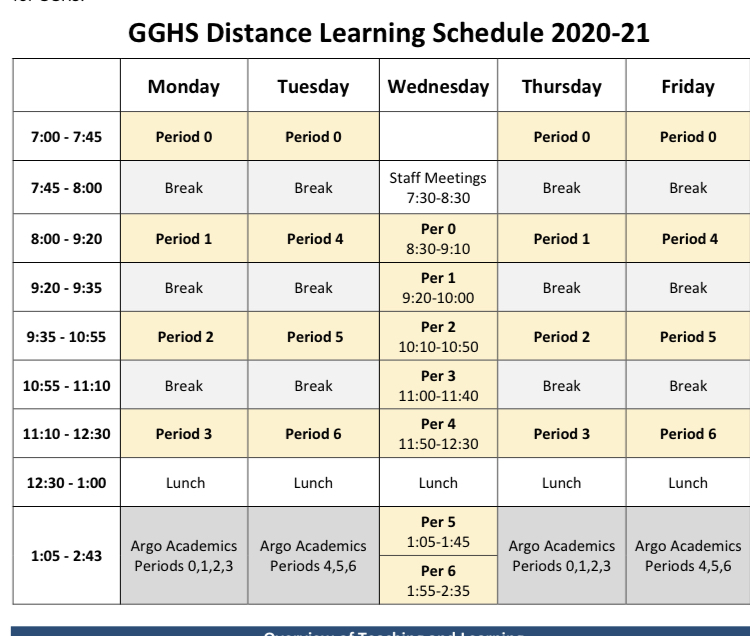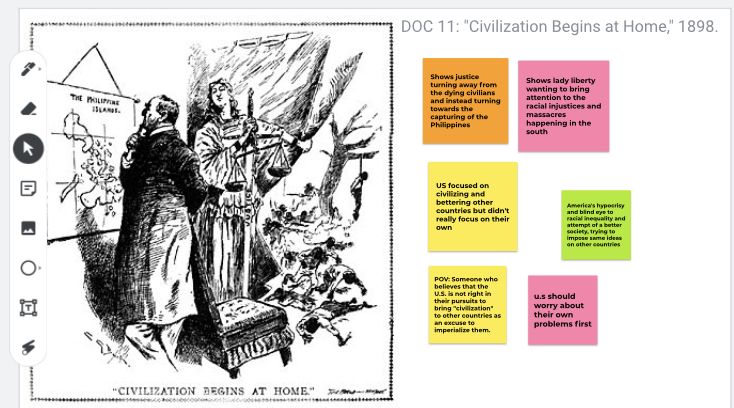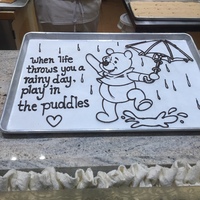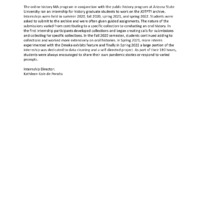Item
The Unexpected Digital Benefits of Distance Learning
Title (Dublin Core)
The Unexpected Digital Benefits of Distance Learning
Description (Dublin Core)
When I first saw our Distance Learning schedule, I was actually relieved. When we were still thinking of re-opening back in August, the Hybrid schedule they proposed was atrocious. I would be able to synchronously (live instruction) teach a student for only 2 hours a week, the other three hours would be asynchronous. The powers that be told us “you have to just deal with the fact that you won’t be able to teach everything you usually do.” Of course, these are the same powers that be who expect the kids to pass their AP tests, and tell us that state testing (which is still happening regardless of the opening status) is “high stakes.” Contradictions, much? So, the Distance Learning schedule, which allows me to see a student three times a week, for 3 hours and 20 minutes of live instruction, was a vast improvement. Still, block scheduling? The very idea of block scheduling sent chills down my spine. Even in college, I opted for M, W, F classes because I do not sit still long enough for the 1.5-hour classes that were on T/Th. And how would I digitize an entire course? I was lucky to have already “flipped” my classroom about five years ago, when I recorded all my lectures and assigned them to watch on YouTube, freeing up class time for discussions and document analysis. But how would I do gallery walks, document analysis, Socratic Seminars, etc. digitally? Could I? Now with a semester of Distance Learning under my belt, there have been some huge advantages to being forced into this completely digitized world. First, digitized documents are amazing. So much of my course is document analysis. With digital documents, the copies aren’t blurry, the kids can zoom in if the font is small, and thanks to Google, they love to highlight and annotate the heck out of them. And Jamboards have been a godsend for collaborative analysis. I am debating whether I will ever go back to paper document analysis. Online tests have also been a game changer. I always steered away from online tests, due to fears over test security. Test days were big affairs in my class. The kids would put all their items, including phones, on the counter. I would go by each table and make them turn out their pockets to ensure no phones. I liked to joke that test days were more serious in my class than going through TSA. Because the students sat in tables of four, there were four forms of the multiple choice test and 20 versions (4 versions per period, for five periods) of the short answer portion of the test. The end of test day left me with 180 Scantrons, 180 short answer questions to grade, all with different forms, plus their notebooks, which they turned in on test day. I had to let that kind of control go this year and jump headfirst into online testing. And I am so glad this happened. It was the push I needed. The world of online testing has improved remarkably since the ten years ago that teachers at my school began to move toward it. It is SO EASY to grade and to make different forms with the click of a button. The multiple choice grades automatically and the short answer, I click the points and it pushes to the gradebook. A task that took me four hours now takes me 30 minutes. I know while the kids are at home, there is nothing to stop them from having notes on the side or on another device, but honestly, with tests that are based on historical reasoning skills, I don’t really care if they are looking up the name of an act, event, or person. I am more interested in if they can effectively use that information to support their argument. When we’re back in person, I can ensure they don’t have their phones and that Go Guardian is on to keep them from opening other windows. Without Distance Learning, I would have never made this change. Writing has also dramatically improved due to technology. I always made my students write essays by hand because the AP exam makes them write them by hand. However, with the AP exam going digital, I can now, too. It is incredible to see how the quality of writing has improved through typing. It is terrible to think that students in previous years may have been less successful on the AP exam simply because they did not formulate ideas as well with pen and pencil as they would on a computer. Block scheduling, too, has been surprisingly smooth. It is so refreshing to have time to analyze documents and follow it up with writing and peer editing - all in one period! Of course, I will be fine to return to our 55 minutes classes someday. I still don’t sit still well. Will I keep the course entirely digital when we are (hopefully) back to a normal year? Probably not everything. I miss the kids having a notebook that we build throughout the year, and will probably return to our traditional notebook for in class activities. BUT I am happy to never run a Scantron again!
Date (Dublin Core)
Creator (Dublin Core)
Contributor (Dublin Core)
Event Identifier (Dublin Core)
Partner (Dublin Core)
Type (Dublin Core)
screenshot
text
Controlled Vocabulary (Dublin Core)
Contributor's Tags (a true folksonomy) (Friend of a Friend)
Collection (Dublin Core)
Linked Data (Dublin Core)
Date Submitted (Dublin Core)
02/05/2021
Date Modified (Dublin Core)
02/13/2021
03/03/2021
08/02/2022
09/12/2024
Date Created (Dublin Core)
02/02/2021
This item was submitted on February 5, 2021 by Kathryn Jue using the form “Share Your Story” on the site “A Journal of the Plague Year”: https://covid-19archive.org/s/archive
Click here to view the collected data.



